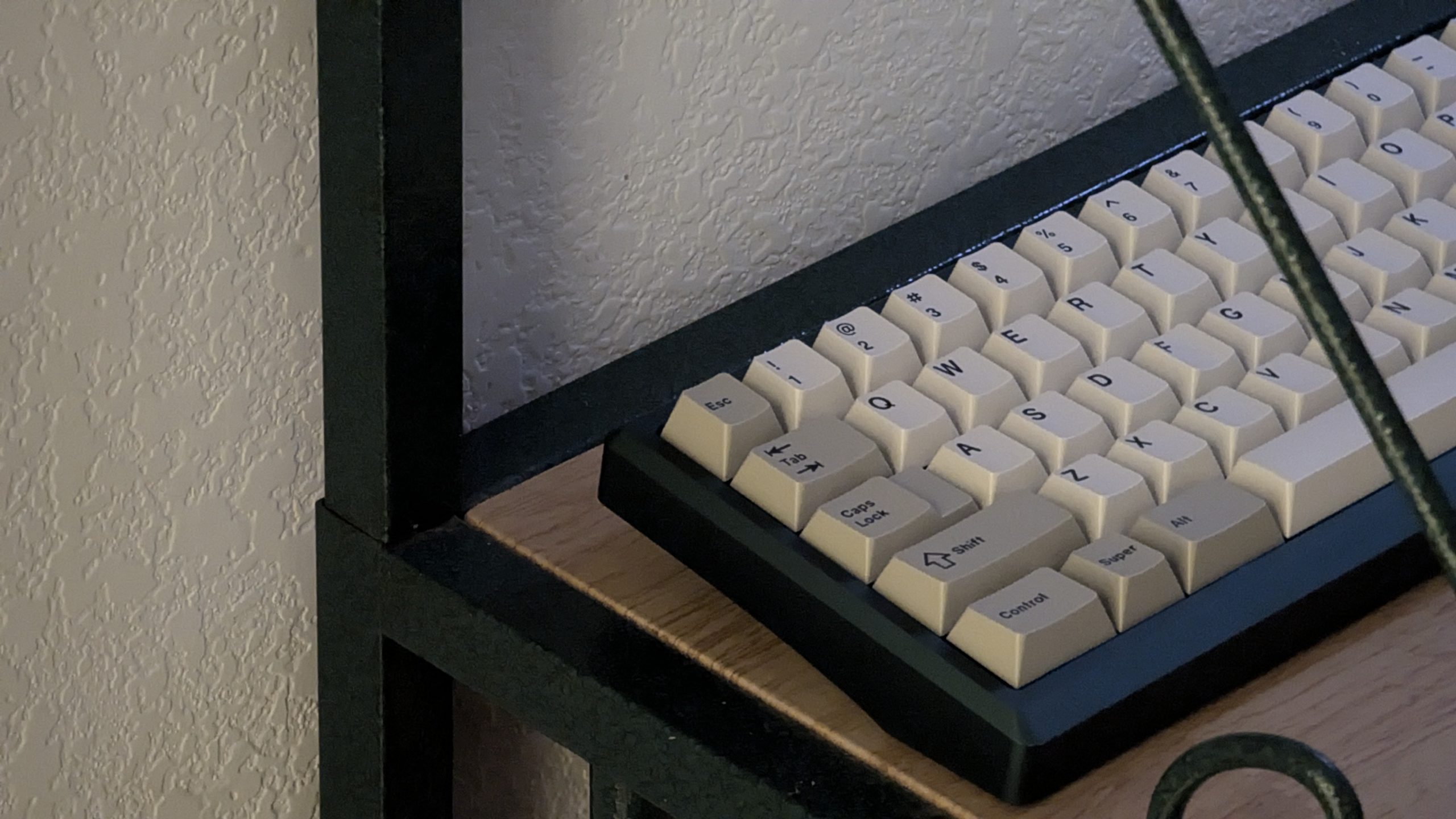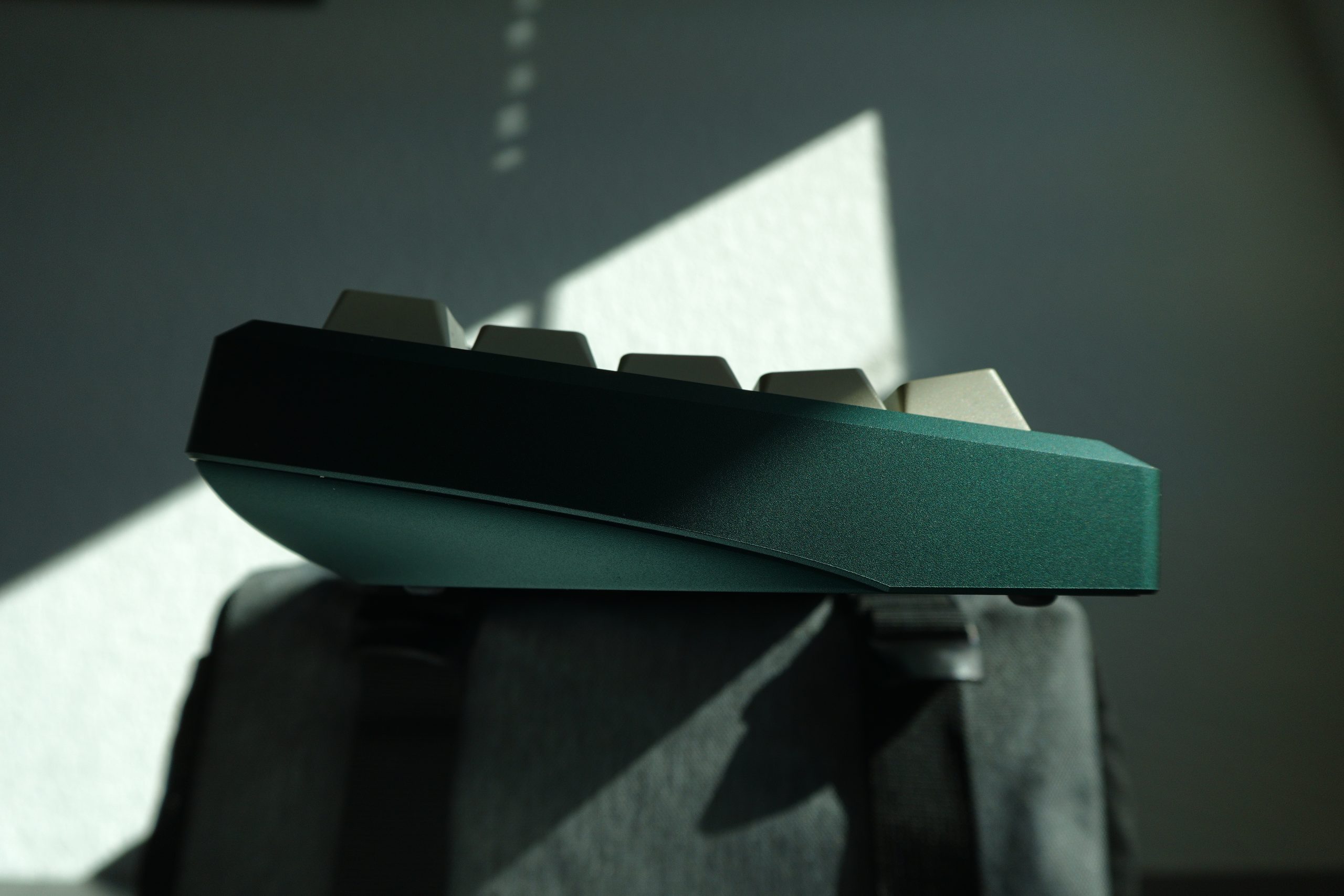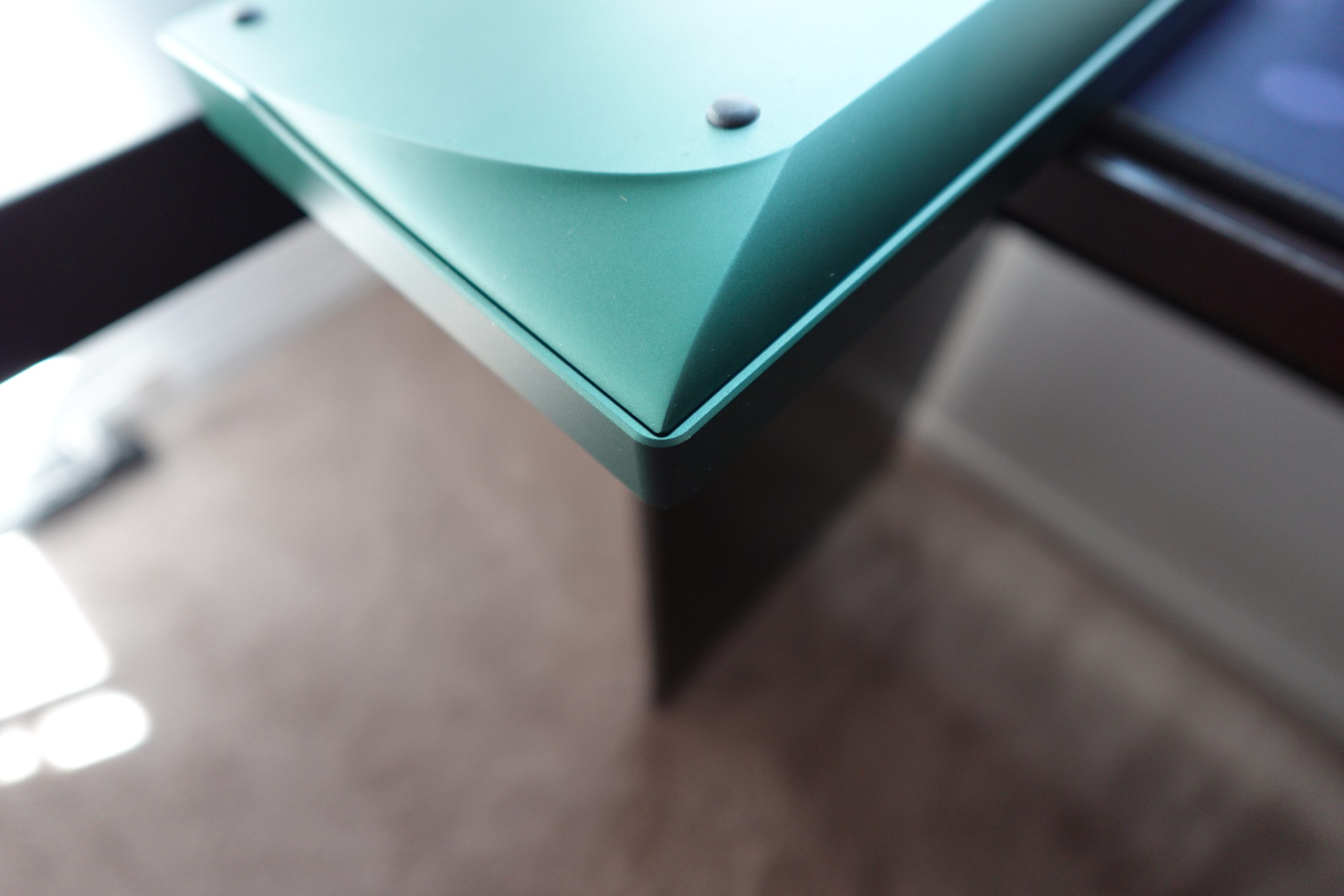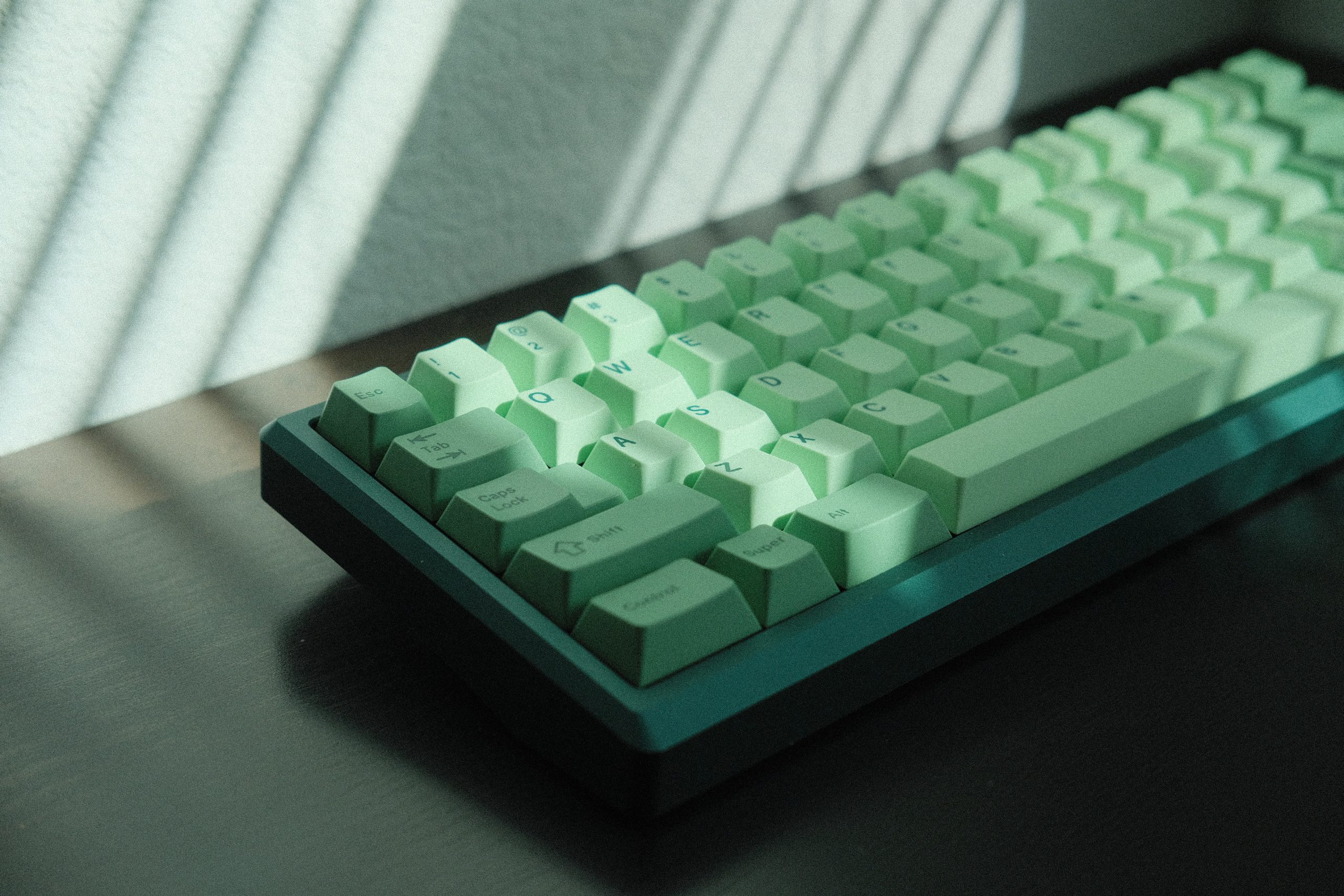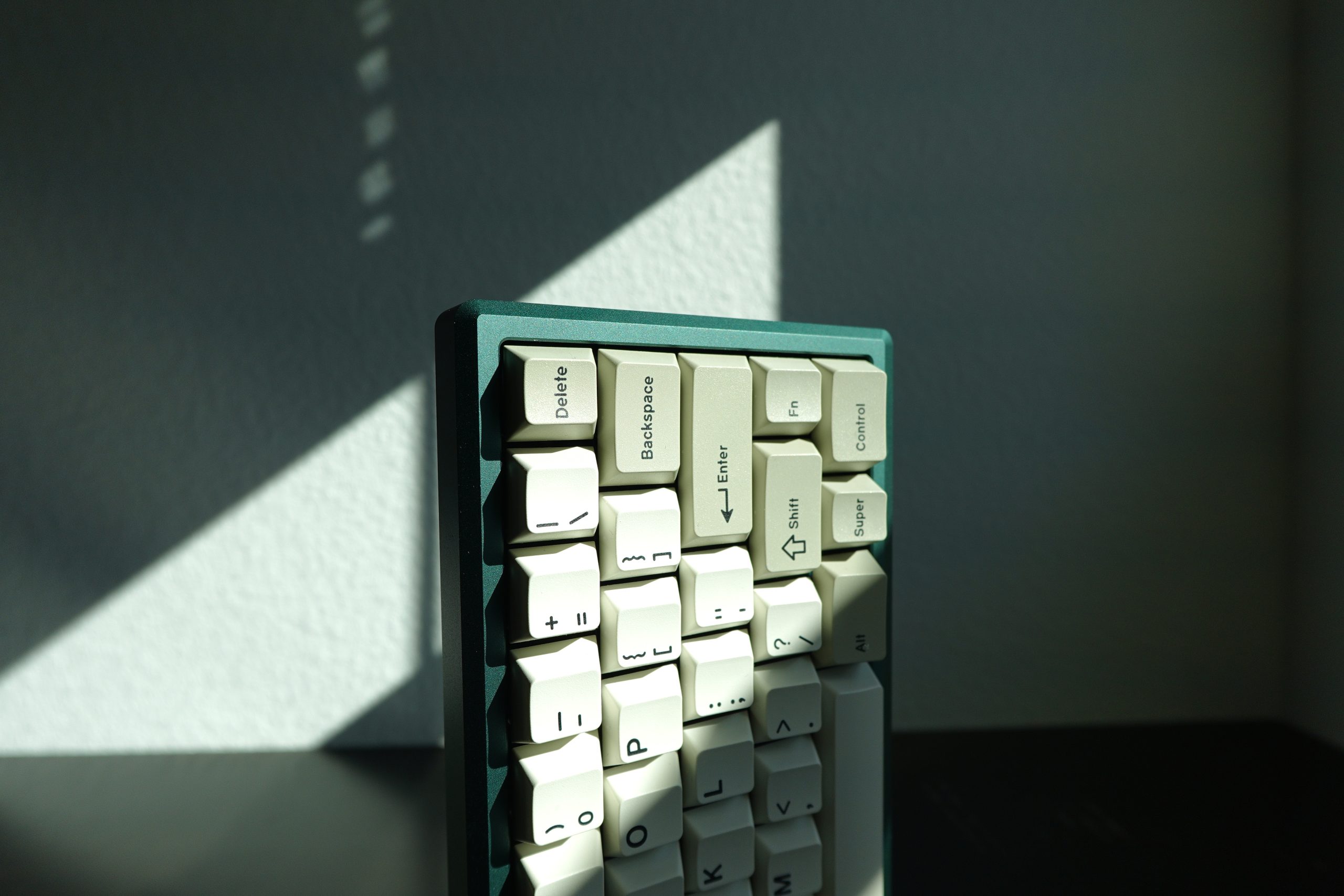Arc60
The Arc60 was an unassuming board for a little while until about mid-2023 when people figured out just how insane the plateless mount of the Arc60 was, turning a new budget filler board into a budget king that hit way above its class. Unfortunately, Vertex and ClickClack have ceased production of the Arc60, but it was able to run a couple times and get plenty out for circulation, to the point that they often go under retail on the secondhand market.
Design/Aesthetics
The Arc60 has a few key features that make its design stand out. The biggest is perhaps the short but very smooth and effective curve on the sides of the lower case which very effectively catches the light and is nothing short of satisfying to the touch. The bottom of the lower case also features a small badge design (which is also engraved on the back of the top case) that reminds me of something between a fin, a tornado, and- for some reason- the Sydney Opera House. I’m not so sure what it is, but between the sandblasted brass and the polished trim of brass*, it’s very appealing for a small badge. The top case is a little more simple, following the taper of the bottom case while flattening out at the very bottom of the case. Fully around the perimeter of the top edge is a very generous chamfer with the front-most chamfer having a longer depth to simulate a smaller Cherry Lip that does slightly help with approaching the case with its front height that cuts comfort close at 19.40mm. It’s a very simple yet striking case that doesn’t push the design features far but still leaves a great impression.
*Editing note: I’ve been informed that the Arc60 “weight” is not actually brass, but is aluminum that is anodized alarmingly similar to what brass would look like… My world is turned upside down.
Assembly
The Arc60 is a fairly simple case to build. It does use a hidden screw design, so you do need to mind the case whenever you are moving the screws so you don’t scratch it with your screwdriver, but an admittedly overkill 10 screws gets you into the case for maintenance. When disassembled, you will see the brass badge from the back of the case poking through with a smaller accent piece for the internal in hopes of helping tame the sound, but something tells me it only just barely helps with its minimal area. Also present connected to the top case is a mid-piece that is used to determine whether you are using a plate or are going plateless, as this case does offer plateless gasket mounting. It is worth nothing that on e-coat cases, there is a possibility for the coating to stick and cause the midpiece and top case to get stuck to each other, which is best remedied by putting it somewhere cold for a little while like the freezer. It’s also worth noting if you get the board either brand new or otherwise completely disassembled secondhand, there are little silicone stoppers that go in the corners to help align the PCB correctly.
PCB and Firmware
Both the solder and hotswap PCB come pre-flashed with Via-ready QMK, and are proprietary designs, meaning replacements are not easy to acquire, especially with the discontinuation of the Arc60. The solder PCB is rich with the usual suite of 60% layout options minus split spacebars, but the hotswap PCB does offer a few options, namely stepped caps lock, split left shift (but no ISO enter oddly), split right shift, and split backspace. 6.25u is also notably missing from the hotswap PCB, but it’s not totally bad considering the board is offered in WKL and HHKB formats. The included daughterboard is similarly a proprietary design and does not follow any of the Universal Daughterboard footprints, so replacement daughterboards end up being hard to get as well.
Typing Experience
Building the Arc60 plated is simply wasting potential that the board greatly benefits from, as plateless by far provides the best experience overall. When built plateless, the assembly offers both a decent bounce, albeit minimal, but is fine in combination with the natural flex of the PCB without a plate. It’s not overbearingly flexible and doesn’t easily short on the case, but it still has a good amount of give to keep the typing feel interesting after so long. On the contrary, the sound of the plateless Arc60 is a very tough contender that punches well above its weight class. Alphas are sharp and full with good volume, while modifiers are slightly quieter but still sharp, with the spacebar having plenty of volume and of course room to throw that noise around because of the lack of a plate. There is a tinge of hollowness around screw points that can be mostly cleaned up with force break, but there is still a tiny amount of it when you know what to listen for.
Overview
The Arc60 is easily in my top 3 of my collection in terms of sound and for aesthetics. It’s crazy that it can be had for under $250 and the only thing holding you back from getting a near-perfect sound is being capable of soldering, and that it’s not talked about more. I typically stray from buying second-hand, but I couldn’t pass it up. I easily recommend getting one if you can solder as everyone I’ve spoken to who’s gotten rid of an Arc60 has regretted it. The only things I can complain about are the fact that the PCB and daughterboard are proprietary designs, and that Vertex won’t make this heavy-hitter again; it’s a real shame.
| Arc60 |
|---|
 |
| Case Material • Aluminum (Case, Mid-piece) • Brass* (Internal Weight) |
| Plate • Plateless • Aluminum |
| Mount • Gasket Mount |
| Included Parts • Screwdriver • Carrying Case • Both solder and hotswap PCBs |
| Cost • $269 (bought for $235 secondhand) |
| Release Date • 2022 |
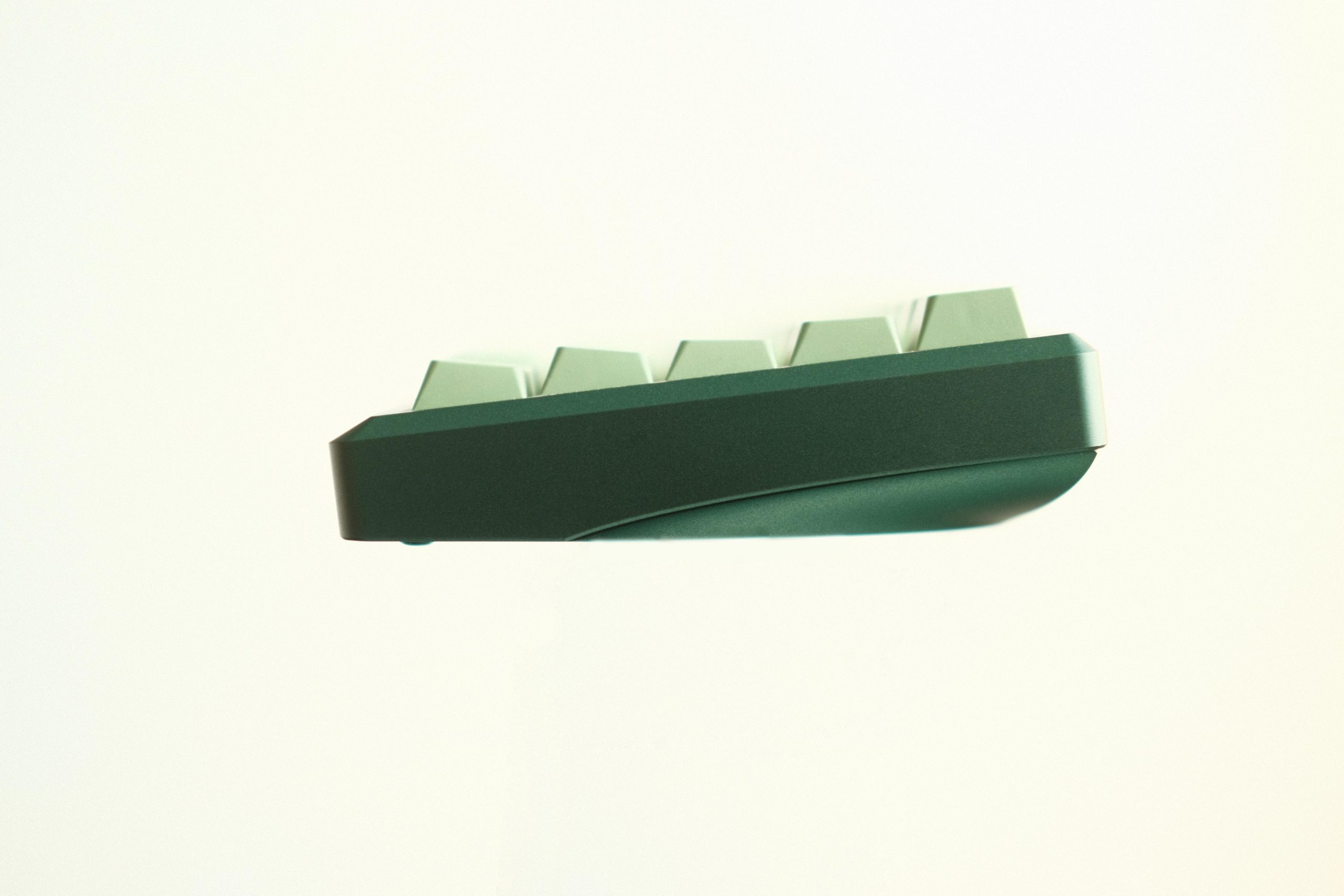
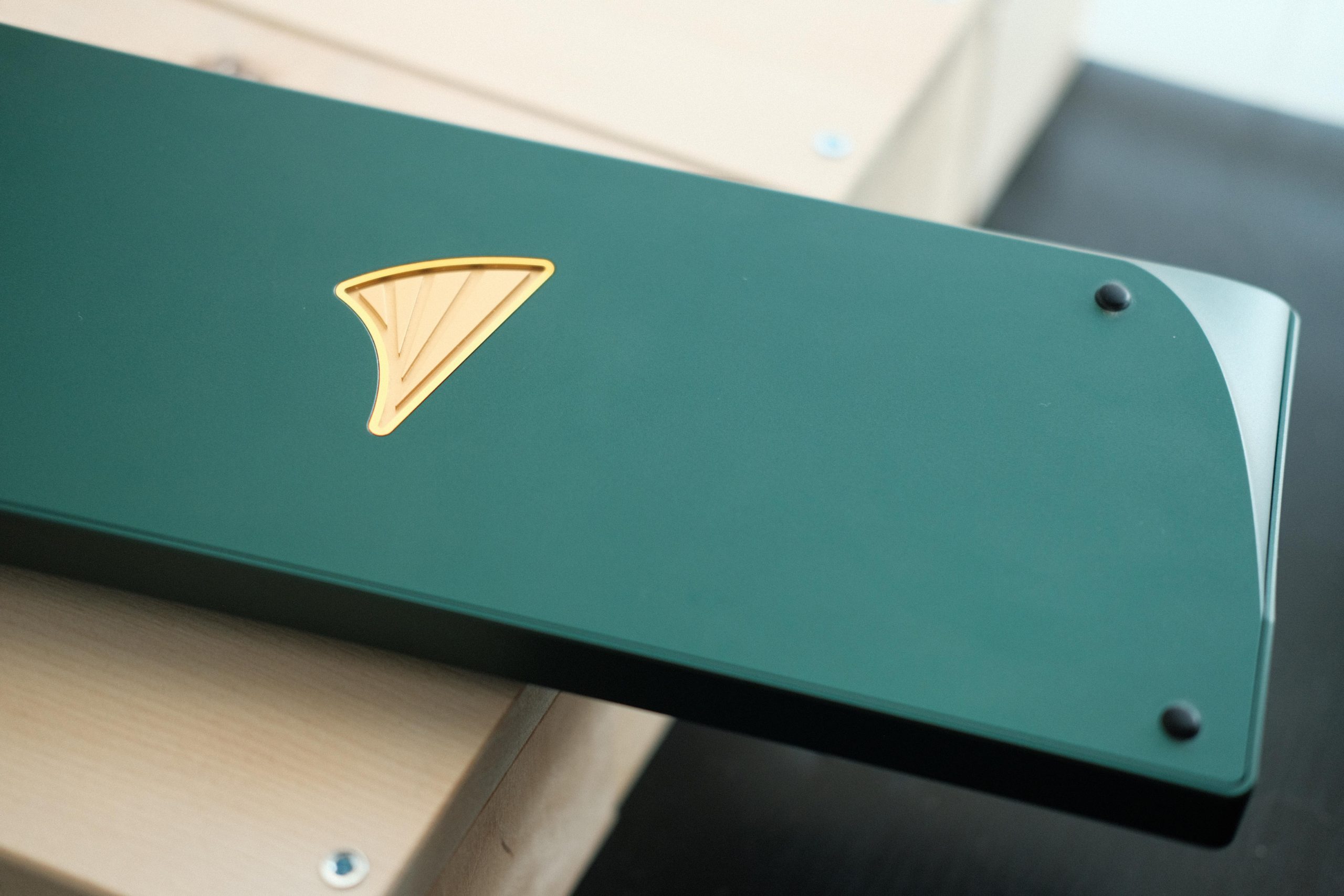
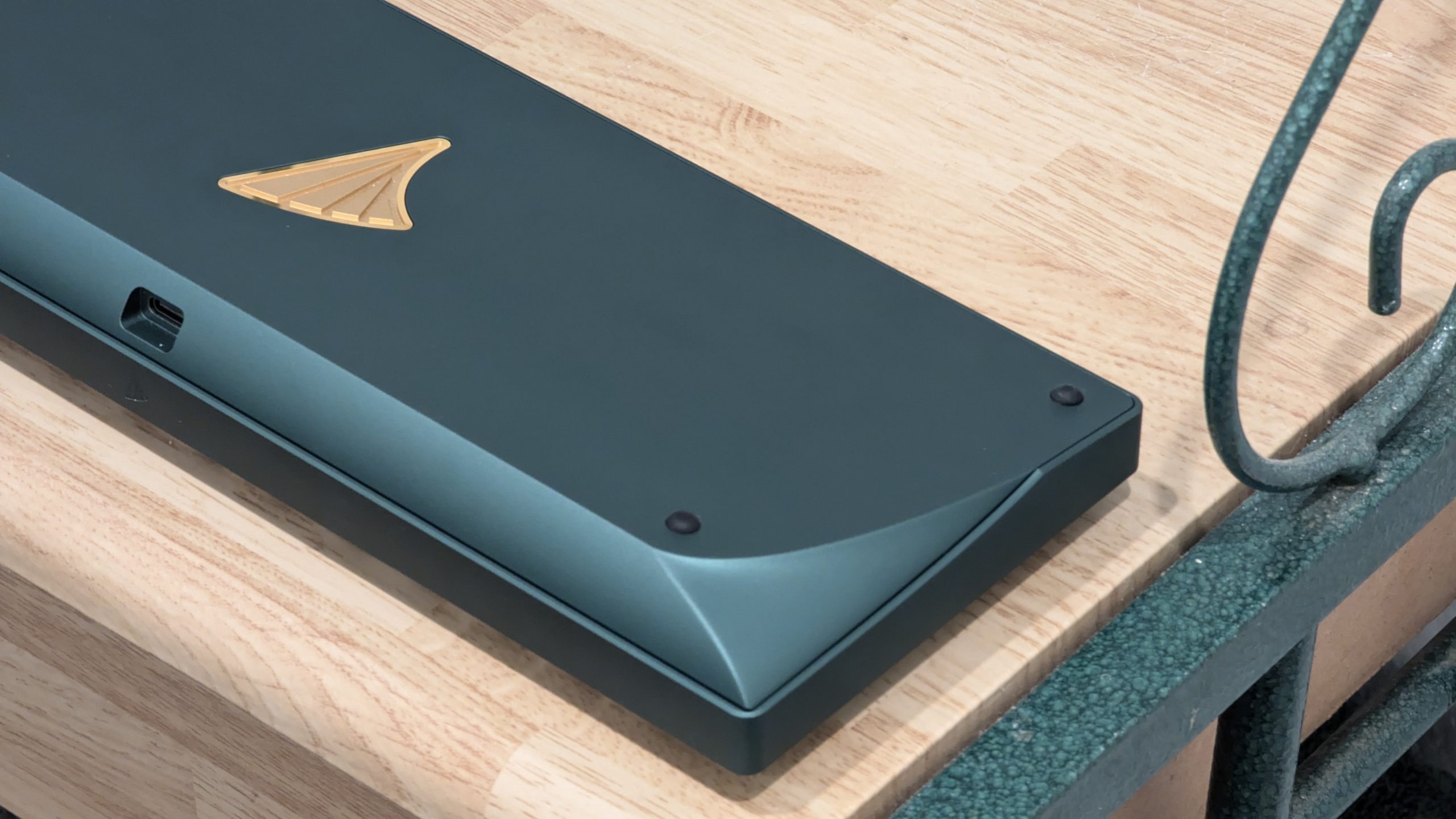
Gallery
This article is not sponsored or compensated for in any way. This article falls under Fair Use and adheres to the Copyrights of the mentioned brands. Any mistakes, feedback or clarifications may be directed to askme@cheesemanfuu.com.
